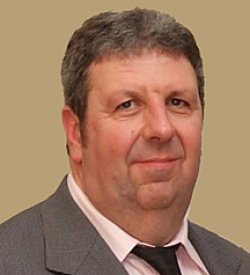This week the Commerce Commission published its draft numbers for the $50 million Telecommunications Development Levy. In a way the TDL acts as a report card on the shifting fortunes of the main telecommunications companies.
The levy is, in effect, an extra and, somewhat discriminatory, tax on telecommunications companies imposed by the outgoing National government. It adds up to a roughly one percent increase in telecommunications prices.
As in previous years Spark and Vodafone are the biggest contributors paying 35 and 26 percent. Chorus and 2degrees are three and four.
The big four players will pay
more than 90 percent of the total levy. Another eleven
companies will pay about eight percent of the TDL between
them.
Investing in rural networks
The TDL helps subsidise investment in rural networks. Most of the money will go back to three of the biggest payers. Spark, Vodafone and 2degrees, as the Rural Connectivity Group, won the contract for bid the second phase of the Rural Broadband Initiative.
There's a double whammy for Chorus
investors. Not only does the company not get any of the TDL
money back in the form of contracts, but unlike the telcos,
Chorus can't raise prices to fund the tax because most of
its rates are regulated.
What the TDL says about the industry
Only companies with telecommunications revenue of more than $10 million pay the TDL. When deciding how much each should pay, the Commerce Commission extracts a number it calls qualifying revenue. This figure can often be well below $10 million.
The commission adds all the qualifying revenue. Then companies pay a share of the $50 million TDL based on their share of qualifying revenue.
You could look at the way the share changes as a crude, yet effective, measure of relative performance.
The total pool of qualifying revenue changed little between this year's determination and last year's. In both cases it comes to a little over $4.2 billion.
In other words, taken as a
whole, New Zealand telecommunications industry growth is
flat. Taking inflation into account, that means it is
actually in gentle decline.
Spark still dominates, but falling
Spark remains the largest contributor to the TDL. In the 2016-2017 year its share was a fraction over 35 percent of the total. That's down from almost 38 percent a year ago, a fall of around 2.5 percent.
Vodafone barely shifted position in the year at a little over 26 percent. Its share of the TDL total climbed by 0.1 percent. You could see this as closing the gap on Spark. In very round numbers Spark is around a third of the total market and Vodafone is a quarter.
Chorus saw its share of the total grow by half a percent. It remains the third largest telco with getting on for 23 percent of the total.
2degrees is a climber. Its share of the total grew from 7.25 percent to 8.38 percent. This reflects the company's strong performance in the market. While it is still a long way behind Vodafone and Spark, to be almost a third the size of Vodafone after seven years in the market is a major achievement.
Vocus is down a smidge at 3.25 percent of the total. It is less than half the size of 2degrees and less than a tenth the size of Spark. The company's relative size could mean few regulatory hurdles if other New Zealand telcos attempt to buy it.
The five
largest telcos collectively account for almost 96 percent of
the total TDL in this year's determination. That's down one
percent from last year.
Fibre effect
This is because of fibre and the rise of the regional fibre companies. Ultrafast Fibre, Enable and Northpower saw their total share climb from less than one percent of the total to about 1.6 percent.
This happens because as customers move from the copper network to UFB fibre some of the money those customer pays switches from Chorus to the regional fibre company. As more sign up for fibre these companies will continue to grow their share of the TDL, but at some point they will stabilise.
Most of the other changes are down to what scientists might call noise in the numbers. Although there is a newcomer in the TDL list this year, Now only accounts for 0.13 percent of the total.
TDL shows flat telecommunications growth was first posted at billbennett.co.nz.




 Binoy Kampmark: Warring Against Encryption, Australia Is Coming For Your Communications
Binoy Kampmark: Warring Against Encryption, Australia Is Coming For Your Communications Gordon Campbell: On Fast Track Powers, Media Woes And The Tiktok Ban
Gordon Campbell: On Fast Track Powers, Media Woes And The Tiktok Ban Binoy Kampmark: Censorship Wars, Elon Musk, Safety Commissioners And Violent Content
Binoy Kampmark: Censorship Wars, Elon Musk, Safety Commissioners And Violent Content Gordon Campbell: On The Public Sector Carnage, And Misogyny As Terrorism
Gordon Campbell: On The Public Sector Carnage, And Misogyny As Terrorism Ramzy Baroud: NATO’s Never-ending War: The 75-Year-Old Bully Is Faltering
Ramzy Baroud: NATO’s Never-ending War: The 75-Year-Old Bully Is Faltering Eugene Doyle: Joining AUKUS Not In NZ’s National Interest
Eugene Doyle: Joining AUKUS Not In NZ’s National Interest